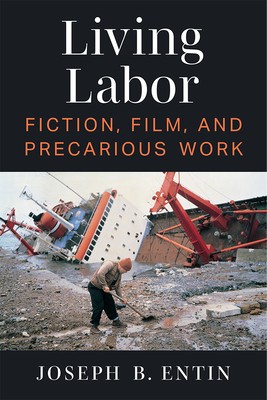
- We will send in 10–14 business days.
- Author: Joseph B Entin
- Publisher: University of Michigan Press
- ISBN-10: 0472055194
- ISBN-13: 9780472055197
- Format: 15.4 x 23.2 x 1.6 cm, minkšti viršeliai
- Language: English
- SAVE -10% with code: EXTRA
Reviews
Description
For much of the twentieth century, the iconic figure of the U.S. working class was a white, male industrial worker. But in the contemporary age of capitalist globalization new stories about work and workers are emerging to refashion this image. Living Labor examines these narratives and, in the process, offers an innovative reading of American fiction and film through the lens of precarious work. It argues that since the 1980s, novelists and filmmakers--including Russell Banks, Helena VÃramontes, Karen Tei Yamashita, Francisco Goldman, David Riker, Ramin Bahrani, Clint Eastwood, Courtney Hunt, and Ryan Coogler--have chronicled the demise of the industrial proletariat, and the tentative and unfinished emergence of a new, much more diverse and perilously positioned working class. In bringing together stories of work that are also stories of race, ethnicity, gender, and colonialism, Living Labor challenges the often-assumed division between class and identity politics. Through the concept of living labor and its discussion of solidarity, the book reframes traditional notions of class, helping us understand both the challenges working people face and the possibilities for collective consciousness and action in the global present.
EXTRA 10 % discount with code: EXTRA
The promotion ends in 21d.10:39:26
The discount code is valid when purchasing from 10 €. Discounts do not stack.
- Author: Joseph B Entin
- Publisher: University of Michigan Press
- ISBN-10: 0472055194
- ISBN-13: 9780472055197
- Format: 15.4 x 23.2 x 1.6 cm, minkšti viršeliai
- Language: English English
For much of the twentieth century, the iconic figure of the U.S. working class was a white, male industrial worker. But in the contemporary age of capitalist globalization new stories about work and workers are emerging to refashion this image. Living Labor examines these narratives and, in the process, offers an innovative reading of American fiction and film through the lens of precarious work. It argues that since the 1980s, novelists and filmmakers--including Russell Banks, Helena VÃramontes, Karen Tei Yamashita, Francisco Goldman, David Riker, Ramin Bahrani, Clint Eastwood, Courtney Hunt, and Ryan Coogler--have chronicled the demise of the industrial proletariat, and the tentative and unfinished emergence of a new, much more diverse and perilously positioned working class. In bringing together stories of work that are also stories of race, ethnicity, gender, and colonialism, Living Labor challenges the often-assumed division between class and identity politics. Through the concept of living labor and its discussion of solidarity, the book reframes traditional notions of class, helping us understand both the challenges working people face and the possibilities for collective consciousness and action in the global present.


Reviews